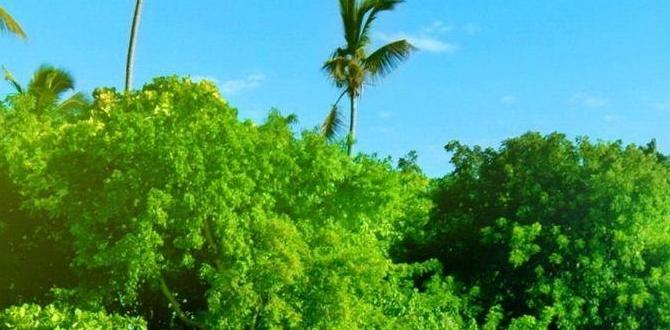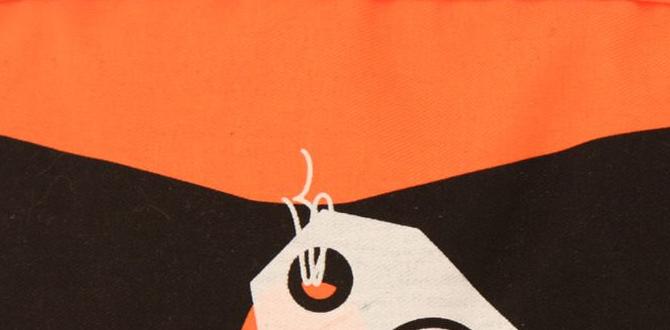Brazil Best Time To Visit: Essential Insight
The best time to visit Brazil depends on what you’re looking for, balancing weather, crowds, and prices. Generally, the shoulder seasons (March-May and September-November) offer a sweet spot with pleasant weather and fewer tourists. However, for specific experiences like Carnival or unique wildlife, other times might be ideal. This guide breaks down the seasons to help you plan your perfect Brazilian adventure.
Planning a trip to Brazil can feel a bit overwhelming, especially when you’re not sure about the weather or when to go to avoid the biggest crowds. Brazil is a huge country, after all, with diverse climates! Figuring out the “best time” feels like a puzzle, but it doesn’t have to be. We’re here to simplify it for you so you can pack with confidence and look forward to a fantastic journey. Let’s explore the seasons and find the timing that’s just right for your travel style.
Understanding Brazil’s Climate: It’s More Than Just Summer and Winter
Brazil straddles the equator, which means it experiences a wide range of climates. While much of the country is in the Southern Hemisphere, experiencing summer from December to March and winter from June to August, the equator means some northern regions are warm year-round. This diversity is a big part of Brazil’s charm, offering everything from lush rainforests to sunny beaches, but it also means the “best time to visit” can change depending on where you want to go within Brazil.
Key climate influences include:
- Monsoon Season: This primarily affects the Amazon region, bringing heavy rainfall.
- Rainy Season (South): Southern Brazil has a distinct rainy season, different from the Amazon.
- Dry Season: Essential for certain wildlife viewing and outdoor activities.
- Temperature Fluctuations: While generally warm, southern parts can get surprisingly cool in winter.
When to Visit Brazil: A Seasonal Breakdown
To truly pinpoint the best time to visit Brazil, let’s break it down by season and what each offers travelers. Think about what you want from your trip – are you dreaming of vibrant festivals, serene nature, or simply soaking up the sun on an uncrowded beach?
Summer (December to March) – The Peak Season for Sun and Festivities
Summer in Brazil means high temperatures, sunshine, and the start of the rainy season in some areas, particularly the Amazon. This is also the period of major holidays and festivals, most famously Carnival.
- Pros:
- Perfect beach weather along the coast.
- Vibrant atmosphere, especially during Carnival (usually February or early March).
- Long daylight hours for sightseeing.
- Cons:
- This is the peak tourist season, meaning higher prices and larger crowds, especially in popular destinations like Rio de Janeiro and the Iguazu Falls.
- Rainfall can be significant in the Amazon and parts of the Northeast, potentially impacting some outdoor activities.
- It can be very hot and humid, which might be uncomfortable for some.
- Best For: Beach lovers, festival-goers, those who enjoy a lively atmosphere.
Autumn (March to May) – The Sweet Spot for Pleasant Weather and Fewer Crowds
As the summer heat subsides, autumn offers a beautiful transition. The rain decreases in most regions, and the crowds begin to thin out, making it an excellent time for a more relaxed exploration.
- Pros:
- Pleasant temperatures, ideal for exploring cities and natural wonders.
- Lower prices for flights and accommodation compared to summer.
- Fewer crowds at major attractions.
- The Amazon’s water levels are still high, which can be great for boat tours.
- Cons:
- Some areas might start to see cooler temperatures, especially in the south towards May.
- The intense heat of summer is gone, which might be a “con” for sun-worshippers, but it’s generally a+.
- Best For: Sightseeing, hiking, exploring cities, nature tours, and budget-conscious travelers.
Winter (June to August) – The Dry Season and Ideal for Certain Wildlife
Winter in Brazil brings cooler, drier weather to many regions, especially the south. It’s the dry season in the Pantanal and Amazon, making it prime time for wildlife viewing.
- Pros:
- Low rainfall in the Amazon and Pantanal, making wildlife spotting easier as animals congregate near water sources.
- Pleasant, mild temperatures in most of the country, perfect for outdoor activities.
- This is generally considered low season in many popular tourist spots, leading to more affordable travel options.
- Cons:
- Southern Brazil can experience cooler temperatures, sometimes even frost in certain areas.
- The north can still be warm and humid, but the southern winter is more pronounced.
- Beaches might not be as consistently hot for swimming in the southern regions.
- Best For: Wildlife enthusiasts (especially in Pantanal and Amazon), budget travelers, those who prefer cooler weather.
Spring (September to November) – Blooming Nature and Warming Up
Spring sees Brazil bursting back to life. Temperatures begin to rise, and the country becomes even more vibrant. It’s another excellent shoulder season with a good balance.
- Pros:
- Warm, pleasant weather returns to most of the country.
- Nature is in full bloom, especially in regions like the Cerrado.
- More affordable than summer with moderate crowds.
- Good for exploring beaches and national parks before the summer rush.
- Cons:
- Rain can start to pick up in some regions towards the end of the season, particularly the Amazon.
- While less crowded than summer, it’s not as quiet as the deeper shoulder months.
- Best For: Nature lovers, city exploration, beach relaxation, and those looking for a good balance of weather and crowds.
Best Time to Visit Brazil by Region and Activity
Brazil’s sheer size means the “best time” can vary significantly depending on your specific destination and what you plan to do. Here’s a closer look:
For the Amazon Rainforest
The Amazon is characterized by two main seasons: the wet season and the dry season. Both offer unique experiences, but for general exploration and ease of travel, the dry season is often preferred.
- Dry Season (June to November):
- Pros: Lower water levels mean more exposed riverbanks and trails for hiking. Wildlife is easier to spot as animals congregate around remaining water sources. Mosquitoes are generally less prevalent.
- Cons: Some smaller tributaries might be inaccessible.
- Wet Season (December to May):
- Pros: Higher water levels allow for deeper exploration of flooded forests by canoe or boat. lush vegetation.
- Cons: Increased humidity and mosquitoes. More rain can disrupt travel plans. Trails might be flooded.
- External Link: For more detailed information on the Amazon climate and its impact on wildlife, consult the World Wildlife Fund (WWF).
For the Pantanal Wetlands (Wildlife Spotting)
The Pantanal is a wetland paradise, and its seasons are crucial for wildlife viewing.
- Dry Season (June to September):
- Pros: This is widely considered the best time for wildlife viewing. Animals are concentrated around permanent water sources, making them easier to find. The landscape is drier, making it easier to travel. Clear skies are common.
- Cons: Can be cooler, especially at night.
- Wet Season (October to May):
- Pros: Birdwatching is excellent. The landscape is lush and green.
- Cons: Many roads and lodges can become inaccessible due to flooding. Wildlife is more dispersed.
For Rio de Janeiro and Southeast Brazil
This region enjoys a tropical climate with distinct wet and dry seasons but remains warm year-round.
- Best Time:
- September to March: Warmest months, perfect for beaches. However, this includes the peak summer and Carnival season, so expect heat, humidity, crowds, and high prices.
- April to August: Cooler and drier. May through July are particularly pleasant with less rain and comfortable temperatures for sightseeing. This is a great time to visit if you want to avoid the summer heat and crowds.
- Carnival: If attending Carnival is your primary goal, you need to visit during the specific days it’s held, which fall in late February or early March. Be prepared for massive crowds and extremely high prices during this period.
For the Northeast Coast (Salvador, Recife, Fortaleza)
The Northeast coast boasts a tropical climate with sunshine year-round, but there’s still a rainy season that’s best avoided for a beach vacation.
- Best Time:
- September to March: This is the driest period, offering plenty of sunshine and warm temperatures perfect for beaches and exploring colonial cities like Salvador.
- April to August: This period sees more rainfall, particularly in the months of July and August. While you can still find sunshine, it’s less reliable, and some activities might be affected.
For Iguaçu Falls
The magnificent Iguazu Falls are impressive year-round, but the best time to visit involves a balance of water flow, weather, and crowds.
- Shoulder Seasons (March-May & September-November):
- Pros: Pleasant temperatures for exploring the park. Moderate crowds and reasonable prices. The falls are usually at a good flow.
- Summer (December-February):
- Pros: The falls are at their most powerful due to summer rains.
- Cons: Very hot, humid, and crowded, especially around holidays.
- Winter (June-August):
- Pros: Dry season means clearer days and fewer crowds.
- Cons: Lower water flow can make the falls appear less dramatic. Can be cooler – bring layers.
Brazil Best Time To Visit Without Crowds
If your main goal is to avoid the throngs of tourists and experience Brazil’s magic with a bit more personal space, the shoulder seasons are your best bet. This means focusing on the periods between the peak summer holiday rush and the main rainy seasons.
The prime times to visit Brazil without significant crowds are:
- March to May (Autumn): Immediately following the summer holiday and Carnival season, this period offers a refreshing dip in tourist numbers. The weather is generally pleasant across much of the country, and prices start to become more reasonable.
- September to November (Spring): Before the summer holidays kick in, but after the main winter chill has passed for most regions. You’ll find a good balance of warm weather and manageable crowds, making exploration much more relaxed.
These periods are ideal for enjoying popular spots like Rio de Janeiro, the beaches of the Northeast, and the natural wonders of Iguazu Falls without the intense peak-season pressure.
Planning for Comfort: Essential Travel Gear
No matter when you decide to visit Brazil, comfort and practicality are key. As a travel guide writer, I always emphasize having the right gear to make your journey smoother, especially if you have specific needs.
For example, long flights or extensive exploration can benefit greatly from reliable adult diapers or child diapers. Choosing breathable, absorbent options ensures discreet comfort and security, freeing you up to focus on the incredible sights and sounds of Brazil. Brands like Always Discreet or Abena offer options that are comfortable and secure for travel. For parents managing little ones, trusted brands of child diapers are a lifesaver, preventing leaks and keeping discomfort at bay during bus rides or long days out.
Here are a few essentials to consider packing:
- Lightweight, breathable clothing for warm climates.
- A light jacket or sweater for cooler evenings, especially in the south during winter or spring.
- Good walking shoes or comfortable sandals.
- Sunscreen, a hat, and sunglasses.
- Insect repellent, particularly if visiting the Amazon or Pantanal.
- A reusable water bottle.
- Necessary personal care items such as comfortable, absorbent adult diapers or child diapers for peace of mind during travel. Companies like Independent Living offer a wide range of discreet, reliable products.
Brazil Travel Costs: When to Find the Best Deals
The cost of travel in Brazil is significantly influenced by the time of year. To get the best value for your money, always aim for the shoulder seasons and avoid major holidays.
Here’s a quick overview:
| Period | Crowds | Prices | Weather |
|---|---|---|---|
| December – February (Summer & Carnival) | High | Highest | Hot, humid, some rain (Amazon) |
| March – May (Autumn) | Moderate to Low | Moderate | Pleasant, cooling |
| June – August (Winter) | Low | Lowest | Dry (Amazon/Pantanal), cooler (South) |
| September – November (Spring) | Moderate to Low | Moderate | Warming up, generally pleasant |
Traveling during the shoulder months of March to May and September to November will typically yield the best prices for flights, accommodation, and even tours. The winter months (June to August) can also be very budget-friendly, especially if you’re not planning to spend all your time on the southernmost beaches and are keen on wildlife viewing in the Pantanal or Amazon.
Frequently Asked Questions About Visiting Brazil
Q1: Is it safe to visit Brazil?
Like any country, Brazil has areas where caution is advised. It’s always good to research specific destinations, be aware of your surroundings, avoid displaying wealth, and use reputable transportation. Major tourist areas are actively policed. Millions of tourists visit Brazil safely each year.
Q2: What currency is used in Brazil?
The currency is the Brazilian Real (BRL). It’s advisable to exchange some currency upon arrival or use ATMs, which are widely available in cities. Credit cards are accepted in most hotels, restaurants, and larger stores.
Q3: What vaccinations are recommended for Brazil?
It’s recommended to consult with your doctor or a travel clinic well in advance of your trip. Hepatitis A, Typhoid, and Tetanus are often recommended. A Yellow Fever vaccination might be recommended, especially if visiting certain regions like the Amazon. The Centers for Disease Control and Prevention (CDC) is an excellent resource for current vaccination advice: CDC Brazil Travel Information.
Q4: Do I need a visa to visit Brazil?
Visa requirements depend on your nationality. Many countries, including those in North America and Europe, currently do not require a tourist visa for stays up to 90 days. However, this policy can change. Always check the official Brazilian embassy or consulate website in your country for the most up-to-date information before your trip.
Q5: Is English widely spoken in Brazil?
English is not widely spoken outside of major tourist hotels and certain tour guides. Learning a few basic Portuguese phrases like “Olá” (Hello), “Obrigado/Obrigada” (Thank you), and “Por favor” (Please) will be greatly appreciated and can enhance your experience.
Q6: What should I pack for Brazil, besides clothes?
Essential items include sunscreen, a hat, sunglasses, insect repellent, sturdy walking shoes, and any personal comfort items like travel-friendly adult diapers or child diapers for uninterrupted adventures. A small backpack for day trips is also very useful. Don’t forget a universal travel adapter if your electronics have different plugs!
Q7: How do I get around Brazil




